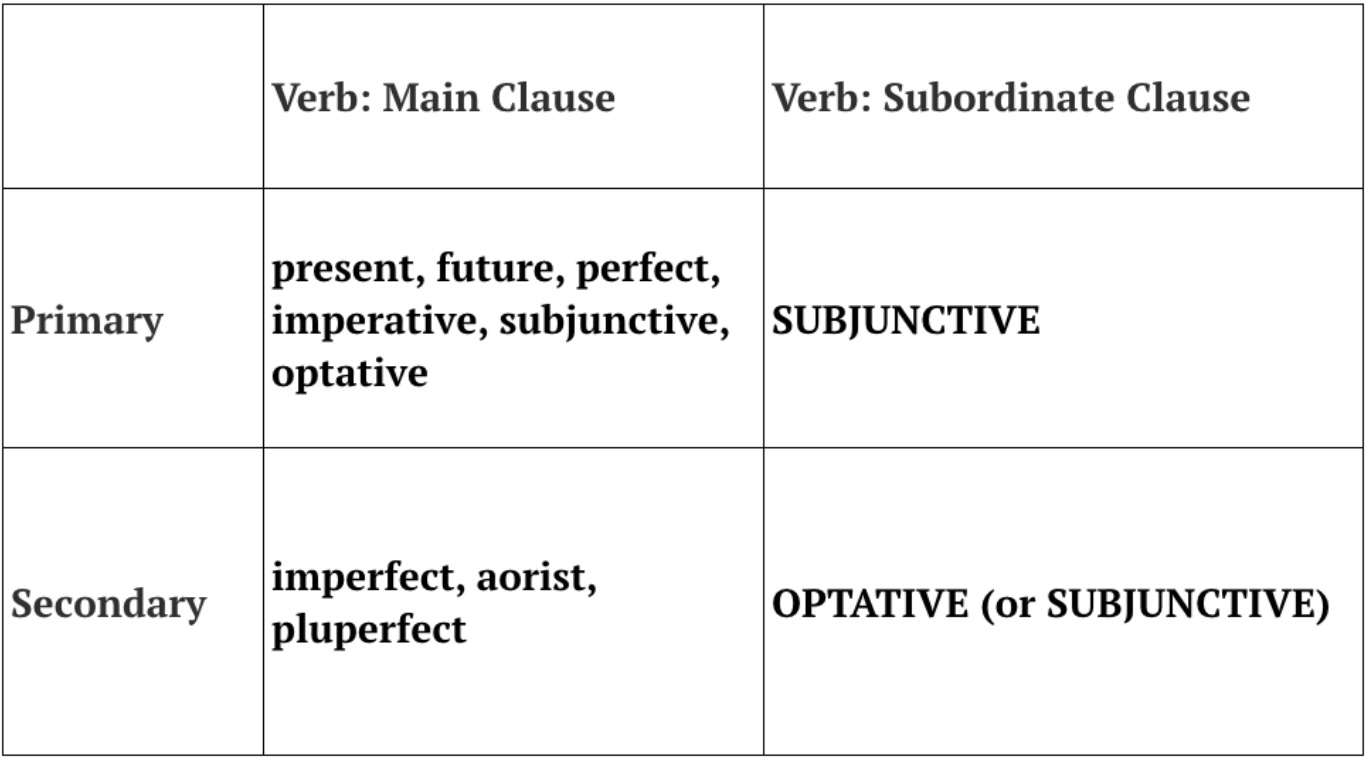48.1 So far we have discussed the uses of the subjunctive and optative in MAIN CLAUSES. Now let’s consider how these moods are used in SUBORDINATE clauses.
For many subordinate clauses, such as PURPOSE CLAUSES or FEAR CLAUSES, the TENSE or MOOD of the main verb determines the MOOD–subjunctive or optative–of the verb in the subordinate clause.
If, for example, the MAIN VERB of the sentence is a PRIMARY tense (e.g., present, future, perfect) or a MOOD that refers to a possible future action (i.e., imperative, subjunctive, optative):
- the verb of the purpose clause is SUBJUNCTIVE
If the MAIN VERB of the sentence is a SECONDARY tense (e.g., imperfect, aorist, pluperfect):
- the verb of the purpose clause is OPTATIVE (or SUBJUNCTIVE to express vividness)
This pattern–subjunctive following primary main verbs, optative following secondary main verbs–is called the SEQUENCE OF MOODS.
To see how the SEQUENCE OF MOODS operates in Greek, let us look in more detail at PURPOSE CLAUSES and FEAR CLAUSES.


